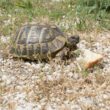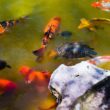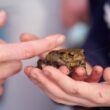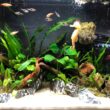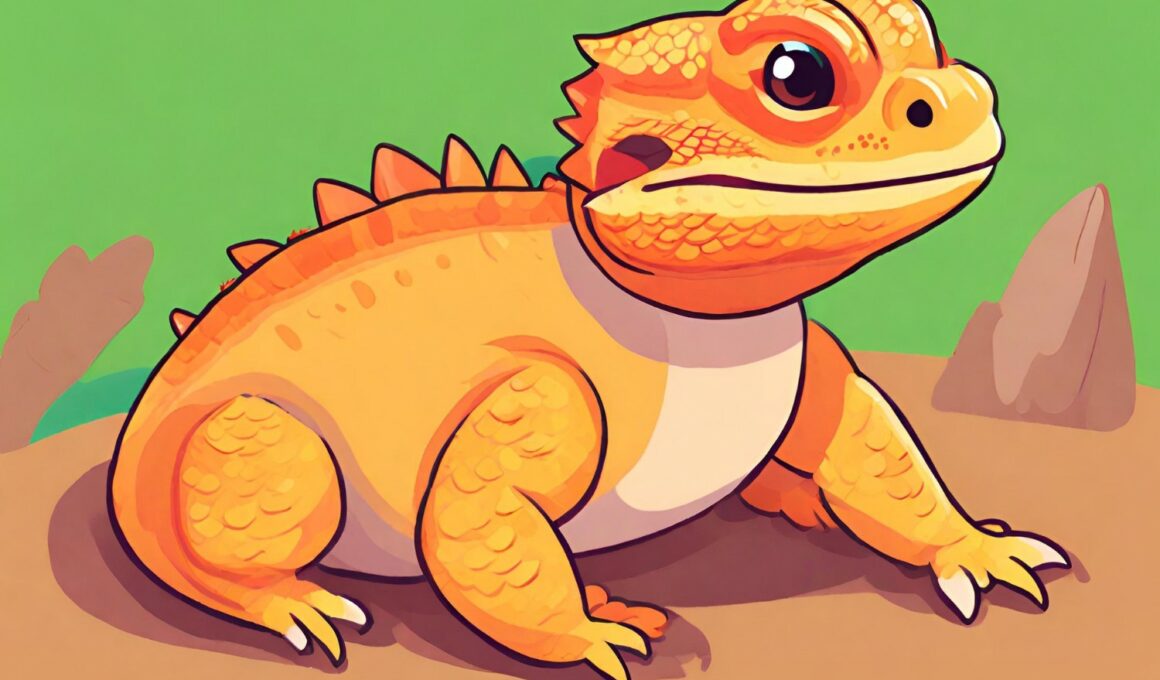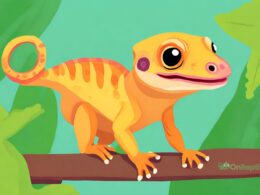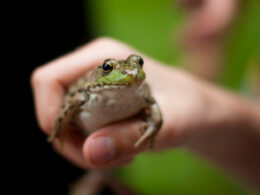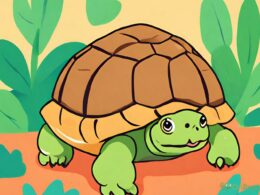In this article Show
Bearded Dragons, with their charismatic personalities and striking appearance, have steadily climbed the ranks of popularity in the reptile world. And it’s easy to see why.
These creatures aren’t just fascinating to observe but are also remarkably interactive, often forming close bonds with their human caregivers.
Having spent a significant portion of my life caring for various pets, and countless hours engrossed in reptile literature, I’ve come to truly appreciate the unique charm and requirements of the Bearded Dragon.
Whether you’re considering adopting one or already sharing your home with this incredible reptile, this guide aims to offer you a comprehensive understanding of Bearded Dragon care. From their natural origins to their dietary needs, and from handling best practices to health checks, this guide covers it all.
Choosing Your Bearded Dragon
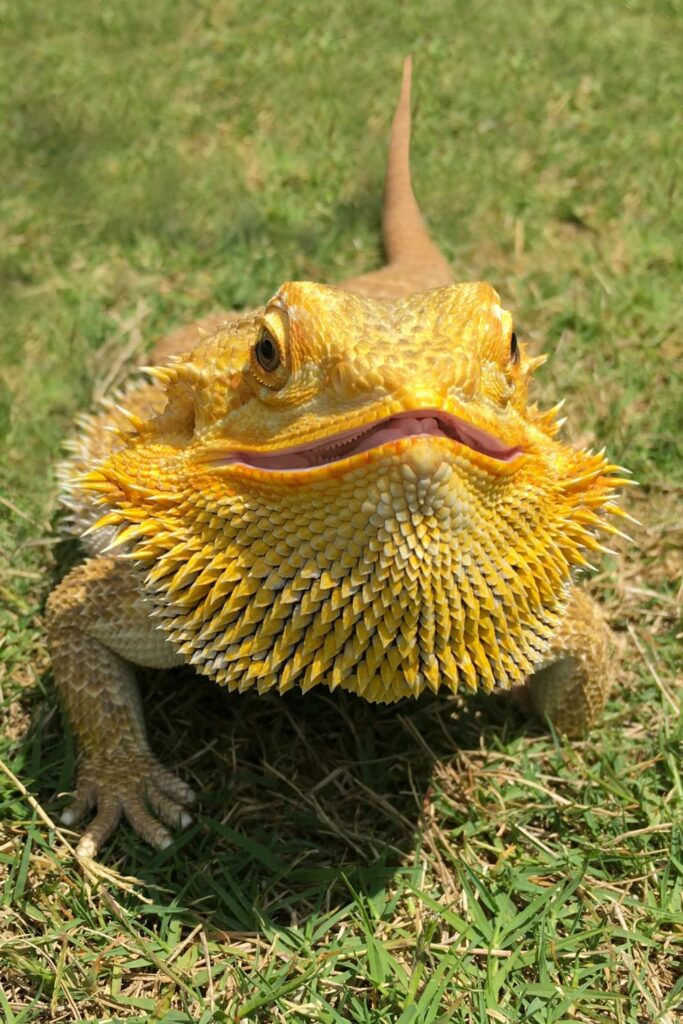
Bearded Dragons are not just a pet; they’re a commitment that lasts for a decade or more. Making the right choice initially is vital for both the pet owner and the pet. To ensure you make an informed decision, let’s consider their varieties, signs of a healthy dragon, and where to make your purchase.
Understanding Different Varieties and Morphs
Bearded Dragons, originally from the arid regions of Australia, have been selectively bred to produce a range of colors and patterns known as morphs. Some of the most popular morphs include:
- Classic or Wild-type: This is the most natural appearance, reflecting what you’d see in the Australian outback.
- Hypomelanistic: Lighter in color due to reduced melanin.
- Translucent: Dragons that have slightly see-through skin, often with a bluish tint.
- Leatherback: Dragons that lack the rough spikes, resulting in a smoother back.
- Silkback or Silkie: These dragons lack spikes altogether, giving them a silky-smooth appearance.
Tips for Selecting a Healthy Dragon: Signs to Observe
When choosing your Bearded Dragon, there are several key indicators of good health:
- Active Behavior: Look for a dragon that’s alert and responsive.
- Clear Eyes: Their eyes should be bright and free from any discharge.
- Healthy Skin: Check for any sores, blemishes, or signs of parasites.
- Sturdy Limbs: Their limbs should be strong, without any signs of deformities or weakness.
- Consistent Breathing: Avoid dragons that are gasping or breathing heavily without apparent reason.
The Debate: Breeders vs. Pet Stores – Pros and Cons
According to a publication from the Herpetological Conservation and Biology journal, captive breeding, as opposed to wild capture, is crucial for both conservational reasons and to ensure the health of pets.
Breeders
| PROS | CONS |
|---|---|
| Healthier Dragons: Breeders often provide a more controlled environment, ensuring better early-life care. | Cost: Purchasing from a breeder can sometimes be pricier. |
| Expert Knowledge: Reputable breeders can offer invaluable advice and support, especially for new owners. | Availability: Depending on where you live, finding a reputable breeder might be a challenge. |
| Varied Morphs: If you’re looking for a specific morph, breeders are usually the go-to. |
Pet Stores
| PROS | CONS |
|---|---|
| Convenience: Easily accessible for most, especially for standard morphs. | Health Concerns: Not all pet stores offer optimal care, leading to potential health issues in the dragons. |
| Return Policy: Some pet stores offer returns or exchanges within a period. | Generic Advice: Staff might not have the specialized knowledge that breeders possess. |
In conclusion, when selecting your Bearded Dragon, it’s essential to prioritize their health and well-being. Whether you choose a breeder or a pet store, always do thorough research and seek recommendations from trusted sources. After all, this decision marks the beginning of a long and rewarding journey with your new scaly companion.
Housing & Environment
Creating a suitable habitat for your Bearded Dragon is paramount. Their enclosure will be their world, a microcosm of the vast Australian outback they originate from. The setup needs to be both functional, ensuring their health and safety, and enriching, catering to their behavioral and psychological needs.
Ideal Tank Size for Juvenile and Adult Dragons
- Juvenile (up to 10 inches in length):
- An enclosure measuring at least 20-40 gallons is a good starting point. The dimensions should be around 24” x 12” x 12” to 36″ x 18″ x 18″.
- Adult (18 inches and beyond):
- Adult Bearded Dragons need a more spacious environment, so aim for a tank that’s at least 55-120 gallons. The minimum size should be around 48” x 24” x 24″.
Substrate Recommendations and Substrates to Avoid
Substrate Recommendations and Substrates to Avoid
- Reptile Carpet: Easy to clean and reduces the risk of ingestion.
- Slate Tiles: Natural, easy to clean, and helps to naturally file down their nails.
- Paper Towels or Newspaper: Not aesthetically pleasing, but sanitary and cost-effective.
Substrates to Avoid
- Sand: Risk of impaction if ingested, especially for younger dragons.
- Cedar or Pine Shavings: Emit fumes that can be harmful to Bearded Dragons.
- Gravel or Small Rocks: Again, a potential ingestion hazard.
Temperature Gradients and UVB Lighting Needs
Temperature Gradients
- Basking Spot: This is where your Bearded Dragon will soak up heat. The temperature should be around 95°F to 110°F.
- Cool Side: It’s essential to have a cooler area where they can retreat if they get too warm. This side should maintain temperatures of 75°F to 85°F.
- Night: The overall temperature can drop a bit at night, but it shouldn’t go below 65°F.
UVB Lighting
- Importance: Bearded Dragons need UVB light to produce Vitamin D3, which helps them absorb and metabolize calcium.
- Lighting Setup: A fluorescent tube-style bulb that covers at least two-thirds of the enclosure length is ideal. Ensure the bulb is labeled for providing UVB (usually 10-12% UVB output is optimal).
- Duration: Aim for about 12-14 hours of UVB exposure during the day, mimicking a natural light cycle.
- Replacement: UVB bulbs lose their efficiency over time. Even if they’re still shining, they may not be providing adequate UVB after 6-12 months, so regular replacement is crucial.
In essence, setting up an appropriate housing environment for your Bearded Dragon involves a blend of the right space, the correct substrates, and the necessary lighting. Attention to these details ensures your Bearded Dragon remains healthy, active, and content in its new home.
Diet & Nutrition
The nutritional well-being of your Bearded Dragon lies at the heart of its overall health, growth, and vitality. Just like us, they require a balanced diet to thrive. Let’s explore the various components that make up an ideal Bearded Dragon diet, ensuring they get all the necessary nutrients and hydration.
Comprehensive Food List
Insects
These are the primary protein source for Bearded Dragons. Staples include crickets, dubia roaches, and mealworms. Treat insects might consist of super worms, wax worms, and hornworms – but these should be given sparingly due to their high-fat content.
Greens
A significant portion, especially for adult dragons. Must-haves include collard greens, dandelion greens, mustard greens, and turnip greens.
Fruits
These can be given occasionally and in moderation. Safe options are blueberries, strawberries, kiwi, and apples. Avoid citrus fruits as they can be too acidic.
Occasional Treats
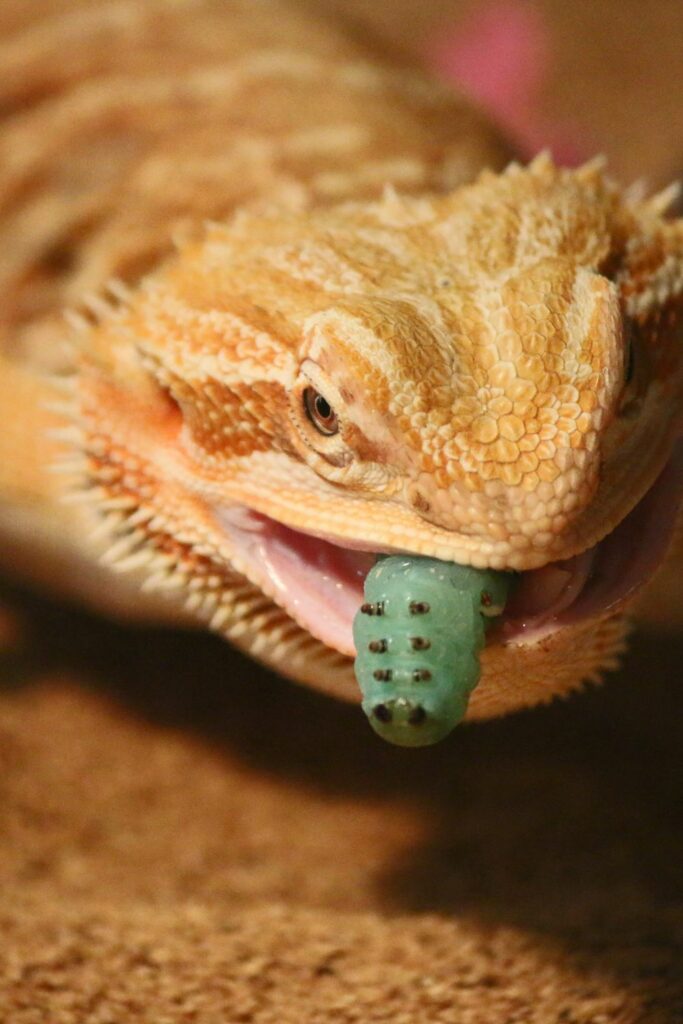
Pinky mice can be offered to adult dragons once in a while.
Importance of Calcium and Vitamin D3 Supplementation
- Bone Health: Calcium is crucial for bone development and preventing diseases like Metabolic Bone Disease.
- Calcium Absorption: Vitamin D3 assists in the absorption of calcium. While UVB lighting helps dragons naturally produce D3, a dietary supplement ensures they get ample amounts.
- Supplementation Process: Dust their food with a calcium powder, ensuring the powder also contains Vitamin D3. For juveniles, this should be done daily, and for adults, 3-4 times a week.
Hydration: Understanding Their Water Needs
- Water Bowl: Always have a shallow water bowl in their enclosure. Ensure it’s clean and filled with fresh water.
- Bathing: Offering them a lukewarm bath once a week can aid in hydration, especially since Bearded Dragons can absorb water through their vent (anus). It also helps with shedding.
- Misting: While they’re desert animals, a gentle misting every other day can be beneficial, especially during shedding.
Frequency of Feeding Based on Age
- Hatchlings and Juveniles (up to 5 months): Feed them insects 2-3 times a day, letting them eat as much as they want in a 10-minute period. Greens should be available at all times, even if they show little interest.
- Sub-adults (5-17 months): Insects once a day and greens always available.
- Adults (18 months and older): Insects 3-4 times a week, with a steady supply of greens every day. Introduce fruits in moderation.
To conclude, diet and nutrition play a pivotal role in the health trajectory of your Bearded Dragon. By offering a balanced, varied diet, ensuring they get necessary supplements, and keeping them well-hydrated, you lay down the foundation for a long, flourishing life for your scaly friend.
Handling & Socialization
While Bearded Dragons are among the more docile and sociable reptiles, proper handling and socialization are vital not only for their safety but also for fostering a trusting bond between dragon and handler. Cultivating this bond can transform the pet-owner relationship from mere care-giving to genuine companionship.
Techniques and Best Practices for Handling Bearded Dragons
1. Start Slowly
Especially if you’ve recently brought your dragon home. Allow them time to get accustomed to their new environment before attempting to handle them frequently.
2. Approach Gently
Avoid fast movements. Approach them from the side rather than from above, as overhead movements can be perceived as threats by many animals.
3. Support Their Body
When lifting them, ensure your hand or arm supports the length of their body. This makes them feel secure and prevents potential injury.
4. Stay Low
During the initial handling sessions, stay close to the ground or a soft surface to prevent injury in case they decide to jump or wriggle out of your grasp.
5. Frequent Short Sessions
Regular, short handling sessions can be more effective than occasional prolonged ones, especially in the early stages of building trust.
Building a Bond: Getting Your Dragon Used to Regular Interactions
1. Consistent Schedule
Like many animals, Bearded Dragons appreciate routine. Try to handle them around the same times each day.
2. Talk to Them
Your voice can be a source of comfort. Over time, they can come to recognize and be calmed by your voice.
3. Explore Together
Once your dragon is comfortable, allow them to explore a safe space outside their enclosure with you supervising. This not only provides mental stimulation but also strengthens your bond.
4. Reward Positive Interactions
Offering a treat after a successful handling session can create positive associations with the experience.
Safety Precautions to Protect Both Dragon and Handler
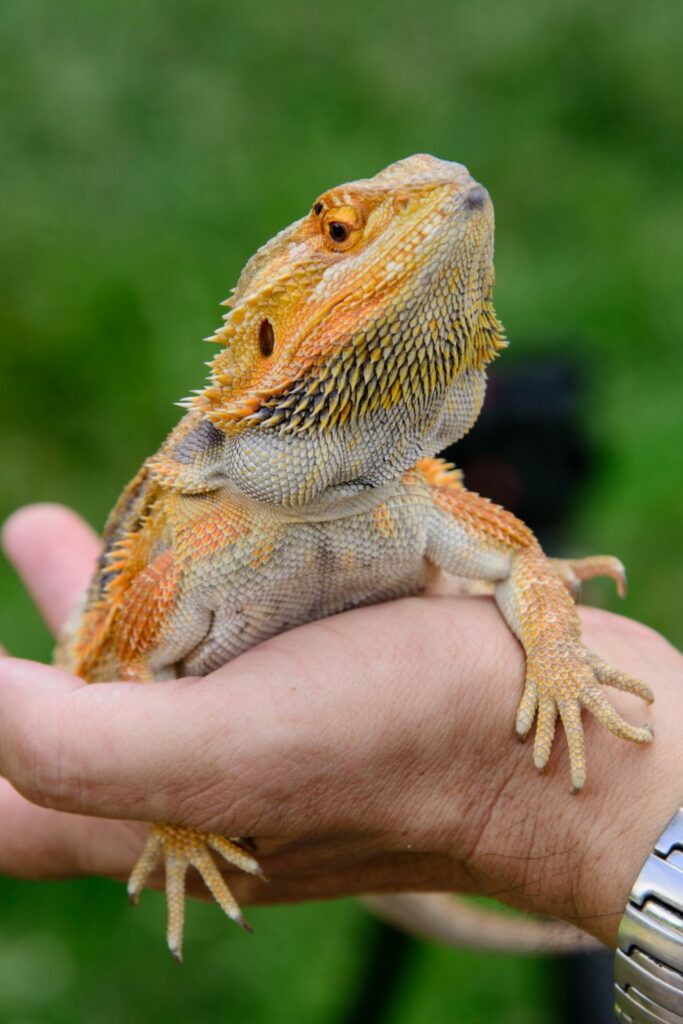
- Hand Hygiene: Always wash your hands both before and after handling. This protects your dragon from contaminants and you from potential salmonella.
- Be Aware of Surroundings: Ensure there are no hazards, like other pets, when letting your dragon explore.
- Monitor Their Mood: If your dragon appears stressed or agitated (black beard, mouth gaping, or tail whipping), it’s best to give them some space and try again later.
- Avoid Face and Eyes: While Bearded Dragons are generally not aggressive, always be cautious and avoid direct contact with their face.
In sum, handling and socializing with a Bearded Dragon is a journey of trust-building. It requires patience, understanding, and consistency. With the right approach, your Bearded Dragon will not only tolerate interactions but will come to enjoy and anticipate these shared moments with you.
Health & Wellness
The well-being of your Bearded Dragon hinges on vigilant care, timely interventions, and a deep understanding of their health requirements. This section is dedicated to ensuring that your scaly friend remains in the best of health throughout their life.
Recognizing Signs of Illness or Distress
- Physical Appearance: Sunken eyes, pale gums, or a consistently dark beard can indicate distress or illness.
- Behavioral Changes: Lethargy, prolonged hiding, or a sudden decrease in appetite.
- Digestive Issues: Diarrhea, constipation, or visible undigested food in their droppings.
- Respiratory Symptoms: Wheezing, heavy breathing, or mucus around the nose and mouth.
- Posture: A limp or paralyzed tail, twitching, or jerky movements can indicate neurological issues.
Shedding in Bearded Dragons: What to Expect and How to Assist
- The Process: Bearded Dragons will shed their skin multiple times as they grow. Adults shed less frequently, often in patches.
- Pre-shed Indicators: Their color may be dull, and their eyes might look slightly cloudy.
Assisting the Shed
- Baths: A lukewarm bath can help soften the skin and facilitate the shedding process.
- Humidity: Increasing the humidity slightly can assist in shedding but avoid making the habitat too damp.
- Avoid Peeling: Do not pull off the shedding skin, as this can harm them. Allow it to come off naturally.
Common Health Concerns: Prevention, Symptoms, and Treatments
Metabolic Bone Disease (MBD)
- Prevention: Adequate UVB lighting and calcium supplementation.
- Symptoms: Weakness, deformities, or swollen limbs.
- Treatment: Immediate vet intervention, UVB exposure, and dietary changes.
Impaction
- Prevention: Provide appropriate-sized food and avoid risky substrates like sand.
- Symptoms: Lack of appetite, lethargy, or bloated abdomen.
- Treatment: Consultation with a vet, lukewarm baths, or dietary changes.
Respiratory Infections
- Prevention: Maintain proper temperature and humidity levels.
- Symptoms: Mucus discharge, wheezing, or mouth breathing.
- Treatment: Veterinary intervention and potential antibiotic treatment.
Importance of Periodic Vet Visits and When to Seek Help
Routine Check-ups
Regular vet visits can preemptively address potential health issues, ensuring your dragon remains in optimal health.
Post-Purchase
After purchasing or adopting a Bearded Dragon, it’s a good practice to have an initial vet check to ensure they’re healthy and parasite-free.
Symptom Identification
If you notice any of the aforementioned symptoms or any other unusual behavior, it’s crucial to consult a vet promptly. Early intervention can be the difference between a minor issue and a severe health complication.
In summary, the health and wellness of your Bearded Dragon require both proactive and reactive measures. Being well-informed, regularly monitoring their health, and seeking expert advice when necessary will ensure that your Bearded Dragon leads a long, healthy, and contented life.
Breeding & Reproduction
Breeding Bearded Dragons, while an exciting venture, is a responsibility that requires proper knowledge, preparation, and commitment. Ensuring the health and well-being of both the parents and the offspring is paramount. Let’s explore the intricate world of Bearded Dragon reproduction.
Basics of Bearded Dragon Reproduction
1. Sexual Maturity
Bearded Dragons typically reach sexual maturity around 8-12 months of age, though it’s recommended to wait until they are fully grown (around 18 months) before breeding.
2. Courtship Behavior
Males will often exhibit head bobbing, circling, or nuzzling to woo a female. They may also wave one of their arms in a slow, circular motion. Mating If the female is receptive, the male will bite the back of her neck and align their vents to mate. This process can last several minutes.
3. Multiple Clutches
A single mating can result in multiple clutches of eggs, sometimes up to three, over a period of several months.
Preparing for Egg-laying and Incubation
1. Laying Box
Before the female is ready to lay her eggs, prepare a laying box filled with a mix of moistened play sand and organic topsoil. The medium should be damp enough to hold its shape.
2. Egg Deposition
The female will dig a burrow and deposit her eggs, usually ranging from 15-30 eggs per clutch.
3. Incubation Setup
Carefully move the eggs to an incubation container filled with a substrate like perlite or vermiculite. The medium should be moist but not wet.
4. Temperature Regulation
Keep the incubator at a steady temperature. Around 80°F-84°F is ideal. Interestingly, the temperature can influence the gender of the hatchlings: higher temperatures typically produce more females, while lower temperatures result in more males.
5. Duration
Eggs will generally hatch in 55-75 days, depending on temperature and humidity conditions.
Rearing Baby Bearded Dragons: The First Few Weeks
Separate Housing
Baby Bearded Dragons can be aggressive and cannibalistic. It’s advisable to house them separately or in small groups in clear containers to monitor them closely.
Feeding
Offer finely chopped greens and appropriately sized insects, such as pinhead crickets. In these early stages, they need to eat multiple times a day and require more protein.
Hydration
While they will get most of their hydration from their food, a shallow water dish should be provided. Misting the hatchlings can also be beneficial.
UVB and Heating
Like adults, baby Bearded Dragons need UVB exposure for healthy bone development. Ensure they have a basking spot and access to UVB light.
Growth Monitoring
Babies grow rapidly, so keep an eye on their development, ensuring they’re shedding, eating, and behaving normally.
Breeding Bearded Dragons is not just about producing offspring—it’s a testament to the care, commitment, and passion you pour into these creatures.
It can be labor-intensive, but witnessing the miracle of life and nurturing these baby dragons from hatchlings to majestic adults is undoubtedly one of the most rewarding experiences a reptile enthusiast can have.
Tips for Longevity & Happiness
Ensuring the longevity and happiness of your Bearded Dragon is a multifaceted endeavor. It isn’t just about their physical health but encompasses their mental well-being, environmental stimulation, and understanding their unique behaviors. Here’s a guide to help your dragon lead a fulfilling life.
Common Misconceptions and Mistakes to Avoid
Solitary Creatures
While Bearded Dragons might seem social with humans, cohabiting them, especially two males, can lead to aggression and stress.
Unvaried Diet
Just feeding them crickets isn’t enough. A varied diet is key to their health.
Heat Rocks
Contrary to popular belief, heat rocks can be dangerous as they might cause burns. Overhead heating and UVB lamps are safer and more effective.
Size Doesn’t Matter
Some believe that Bearded Dragons will only grow to the size of their enclosure. This is a myth; an undersized habitat can lead to stress and health issues.
Enrichment Ideas: Toys, Activities, and Exercises
1. Interactive Toys
Reptile-safe balls or items they can push with their nose can keep them engaged.
2. Climbing Structures
Branches, hammocks, and basking platforms allow them to climb and explore vertically, mimicking their natural environment.
3. Digging Opportunities
Offering a sandbox or a dig box filled with safe substrate can satisfy their burrowing instincts.
With supervision, allowing them time outdoors in a secure enclosure can be a great way for them to get natural sunlight and explore a different environment.
5. Treat Foraging
Hide treats in their enclosure to encourage them to ‘hunt’, stimulating their brains and instincts.
Observing and Respecting Bearded Dragon Behaviors and Moods
1. Body Language
Understanding their body language can help gauge their mood. For instance, a raised tail can indicate excitement, while a black beard might suggest stress or agitation.
2. Brumation
Don’t be alarmed if your dragon becomes lethargic during cooler months. Bearded Dragons can go through a hibernation-like state called brumation.
3. Mouth Gaping
While this might look alarming, it’s their way of thermoregulating and is perfectly normal when they’re basking.
4. Shedding Signs
If they’re scratching or seem a bit grumpier than usual, they might be getting ready to shed. Ensure they have adequate humidity and bathing opportunities during this time.
5. Respect Boundaries
If they’re showing signs of wanting to be alone, give them their space. It’s essential to respect their moods and boundaries.
In conclusion, the key to a happy, long-lived Bearded Dragon is understanding their needs, offering a stimulating environment, and respecting their unique behaviors.
By tuning into their world and anticipating their needs, you’ll foster a bond that’s not just based on care but on mutual respect and understanding. It’s this bond that makes keeping a Bearded Dragon one of the most rewarding experiences in the world of reptiles.

